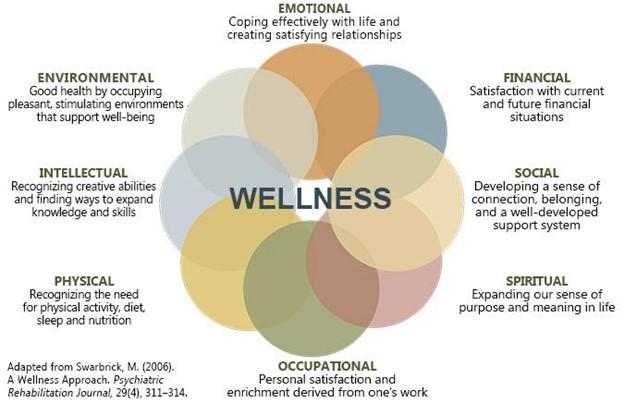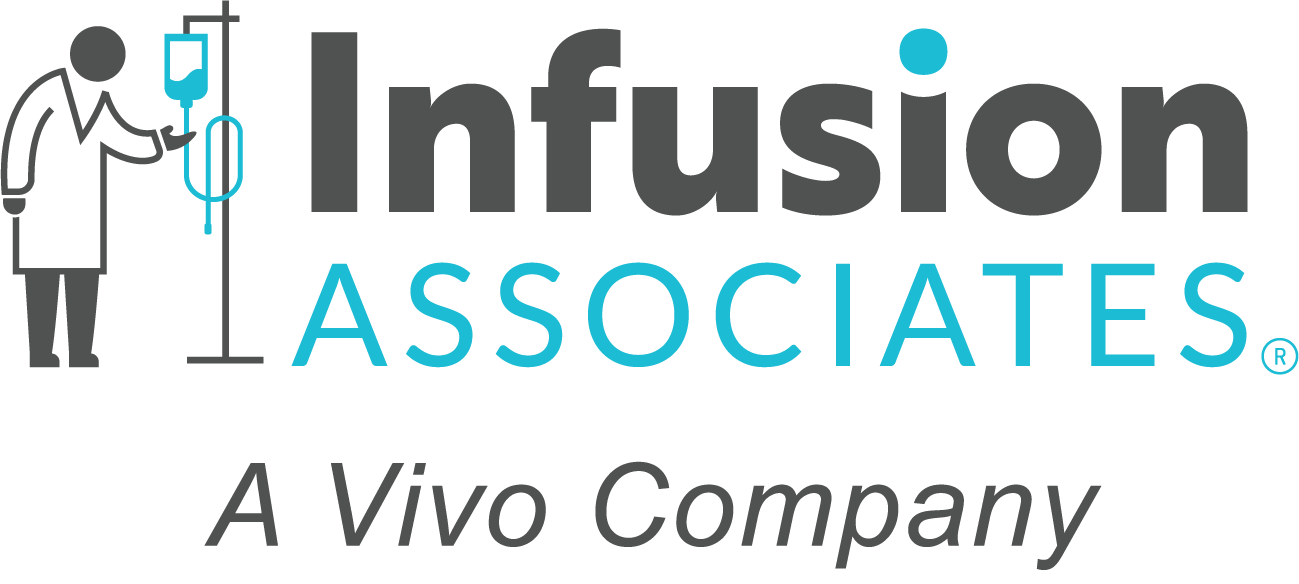Written by Frances Smith, patient access specialist
The adjustments that many Americans made during the COVID-19 pandemic brought to light that our collective work-life habits were unbalanced. Before 2020, we normalized the work grind as a vehicle to productivity, even at the expense of our well-being—an often-problematic mindset as it encourages us to neglect ourselves for the sake of results.
Still, it’s been a hard mindset for many to shake, even with the understanding of how this way of doing things negatively affects our nervous and immune systems. This is why the rise in wellness education and self-care awareness post-pandemic comes as no surprise. Wellness has become more of a focus both within the corporate working space and without and for obvious reasons.
We want to do better, and we want to feel better in our lives and the work that we do. What does it mean to practice wellness in our daily lives?
What is wellness?
Wellness refers to being in good health, especially as an actively pursued goal. When we think of good health, physical health and fitness are often the first elements that comes to mind. Emotional/mental health follows if we’re lucky. Our understanding of wellness as a society is perceived through a narrow lens. Black and white—we are either sick or not; however, wellness is much more than this binary.
According to Dr. Peggy Swarbrick, a Research Professor in the Applied Department of the Graduate School of Applied and Professional Psychology at Rutgers University, wellness encompasses more than just physical health. In fact, she believes there are eight dimensions of wellness. In no particular order, these dimensions are: physical, spiritual, social, intellectual, emotional/mental, occupational, environmental, and financial.

Swarbrick says wellness involves being aware of ourselves as WHOLE people, and our physical health is just one aspect. Swarbrick developed the 8 Dimensions of Wellness model to exhibit the idea that all wellness dimensions are connected, and each affects the other. Therefore we nurture our wellness by way of tending to each dimension.
Swarbrick gives an example, “when we feel financially stressed, we experience emotional stress (anxiety), sometimes leading to physical problems (illness), less effectiveness at work (occupational), and maybe even questioning our meaning and purpose in life (spiritual).” This example shows that wellness is not black and white it falls on a spectrum, and each dimension is interconnected and builds upon another.
Wellness is primarily a personal pursuit based on what the individual finds essential for their lifestyle goals. Wellness involves finding balance or a healthy baseline in all eight dimensions, as they are interconnected and influence one another.
Physical
- Physical activity
- Diet
- Sleep
- Nutrition
Again, our physical state is often the first thing that comes to mind when we think of wellness. We believe physical wellness has more to do with being sick or not being sick, but it’s far more than that. It involves keeping the body as healthy and energetic as possible.
Spiritual
- Expanding our sense of purpose and meaning
- Intentionally seeking inspiration
- Contributing to something beyond oneself
These pursuits will look different for each individual, as spiritual wellness is a personal journey. It doesn’t necessarily have anything to do with religion, though it can.
Social
- Forming positive relationships with others
- Developing a sense of connection and belonging
- Well-developed support system
Creating and maintaining safe and inclusive interpersonal and group relationships is necessary for true social wellness.
Intellectual
- Recognizing our creative abilities and
- Finding ways to expand our knowledge and skills
- Life-long learning
- Application (putting what you’ve learned to use)
- Knowledge sharing
In addition, intellectual wellness can be identified by a healthy sense of curiosity. Intellectual wellness continues beyond school; every day is an opportunity to learn something new. As long as we are alive, we should continue to grow intellectually.
Emotional
- Express feelings
- Adjust to emotional challenges
- Cope with stress and traumatic life experiences
These skills seem easy, but in reality, it not always is. Emotional wellness is the ability to reasonably cope with whatever situation is right in front of us; it involves accepting and managing your emotions carefully and acknowledging the feelings of others. It takes a lot of intentional mindfulness to achieve this skill.
Occupational
- Participating in activities that provide meaning and purpose, including employment
Most of us have to have a job to take care of our basic needs, but occupational wellness goes beyond having your basic needs met. It involves taking pride and satisfaction in your job performance and progress.
Environmental
Environmental wellness involves being and feeling physically safe and being able to access clean air, food, and water. Includes both our microenvironment (the places where we live, learn, work, etc.) and our macro-environment (our communities, country, and whole planet).
- Safe and affordable housing
- A positive work and school setting
Overall, it’s living and working in a space suitable for one’s needs.
Financial
Financial wellness involves having financial resources to meet practical needs and having a sense of control and knowledge about personal finances regardless of whether we are happy. It includes:
- Having financial literacy
- Being able to pay bills on time
- Having a safety net to deal with emergencies.
Next Steps in Your Wellness Journey
Consider the information presented here as a spark of awareness. Now that you know the 8 Dimensions of Wellness, assess where you are in each dimension and reflect on what areas you could be healthier in. Create a plan, and work on the areas you feel need the most attention.
If you’re interested, you can start journeying towards a deeper sense of wellness by using this SAMHSA’s free guide and worksheets here: Creating a Healthier Life, a Step-by-Step Guide to Wellness.
Embracing change to improve your life can be overwhelming. You’re creating new habits and releasing old ones. Don’t put too much pressure on what you discover. If you focus on improving one or two dimensions at a time, it becomes very doable. Commit to doing your work, and go at your own pace.
The goal is to understand how each dimension is interrelated to view wellness from a whole perspective. The 8-Dimensional model serves as a tool to help you map a clearer path to becoming a healthier, happier version of yourself. It’s all about living well and becoming more resilient, but it’s not a race. It is an ongoing process, and it’s worth the journey.
If you interested in learning more about the IV treatments we offer, you can contact us by calling us at (833) 394-0600 or filling out our online form.

